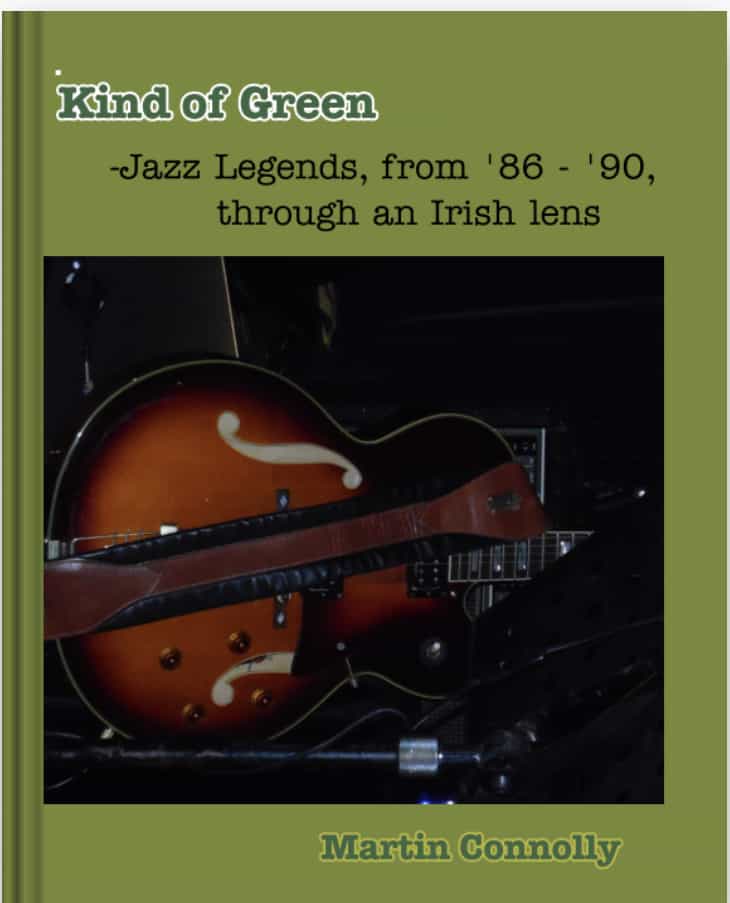Martin Connolly is from Belfast, a graduate of Trinity College and Queen’s University, resident in Japan since 1991. A Professor of literature at Tsurumi University, Yokohama, Martin has published extensively on Joyce. He also writes creatively -his latest novel is Belfast, with Dinosaurs, 1979 (Shanway Press).
Kind of Green -Jazz Legends, from ‘86 – ‘90, through an Irish lens is primarily a book of never-seen-before original photos of many of the greatest jazz artists during the period 1986 to 1990. Said photos had sojourned, so to speak, in the dark and dusty attic of my family’s house for three decades until I fished them out last year. It was a great catch, with the likes of Miles Davis, George Benson, Herbie Hancock, Dexter Gordon, Cab Calloway, Pat Metheny, John McLaughlin and a host of other luminaries showing their legendary visages. They had been captured by a kind of green photographer –moi– all those years ago, who had followed around his part-time jazz journalist brother to gigs and festivals, here and there. ‘Here’, for readers of Slugger O’Toole, would be Belfast, during the city’s Festival, at the famed Guinness Spot. ‘There’ would be Holland, at the North Sea Jazz Festival, or London, where my brother was based.
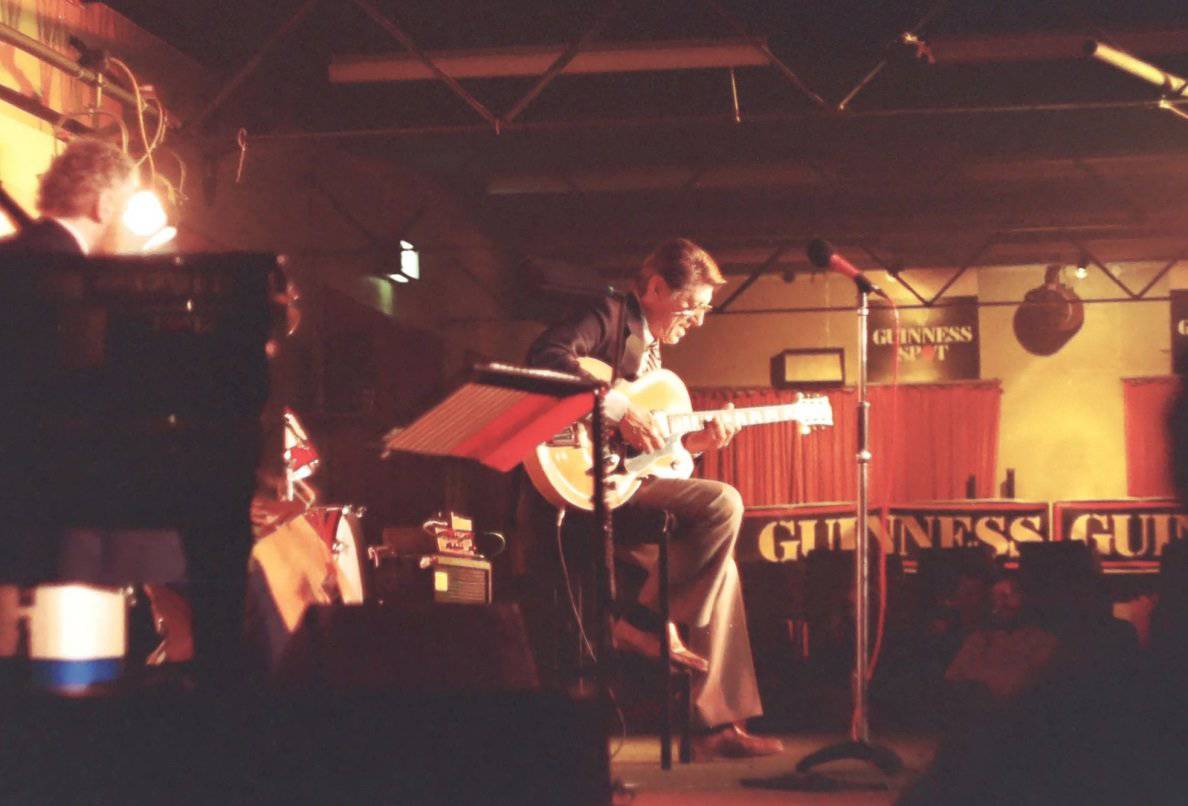
Legendary American jazz guitarist Tal Farlow, performing at the Guinness Spot at the Belfast Festival,
November 1986. Wonderful evening of jazz, wonderful gentleman -so friendly. Photo, Martin Connolly
When not teaching at a secondary school in London, Jim would cover gigs and interview jazz stars for Ireland’s first ever jazz magazine, JazzNews International, which ran between 1986 and 1989. Even in that short time the magazine gained fame, respect and prestige. The magazine had correspondents all over the globe. It was at one point deemed to be the ‘best English-language jazz publication in the world.’ It helped being showcased by none other than Gay Byrne on his famous Late Late Show on RTÉ in 1987. The magazine’s founder, Dara O’Lochlainn, was a highly respected and much-in-demand graphic designer in Dublin. Among other things, he designed a fair few album covers, for the likes of The Dubliners, Horslips and others. Dara’s father Colm, had been a designer and printer of some repute, founder of the Three Candles Press and creator of the iconic Colmcille typeface. Colm was proud of his talented children, but, being of a certain generation, didn’t mind letting Dara know that he didn’t approve of the music that his son had fallen for. ‘Jazz?’ he angrily shouted once, recalling his days during the 1916 rebellion, ‘That’s not what Pearse died for!’ Alas, his was a common opinion among many Irish, that Ireland had its own culture to think of, and had had quite enough of foreign influence, thank you very much. Jazz was an import Ireland could do without. Dara, however, didn’t care a fig for such a retrogressive attitude, because he’d fallen deeply in love at an early stage with the weird and wonderful sounds that, presumably, he had heard first on some subversive foreign radio station…
When not engaged in his highly successful and busy design work, from the late 1950s, Dara fell into the developing –non-indigenous– music scene in Dublin. He became a drummer and then a singer with a Dixieland style group, and, with his larger-than-life character, soon graduated into a natural band front-man. It didn’t take long for Dara and his various line-ups to become a fixture within the burgeoning Dublin jazz scene. His stature grew to the point where he became Ireland’s unofficial ambassador of jazz, the crowning moment of which was when Dara and his band welcomed the one and only Louis Armstrong at Dublin airport in 1967. Louis was impressed: ‘We speak the same language,’ he announced. Dara would perform the same courtesy for Humphrey Lyttleton in 1974. Thanks to Dara, and his fellows, jazz had taken root, and even come of age, in Ireland. With his background, Dara was perfectly poised to launch a jazz magazine.
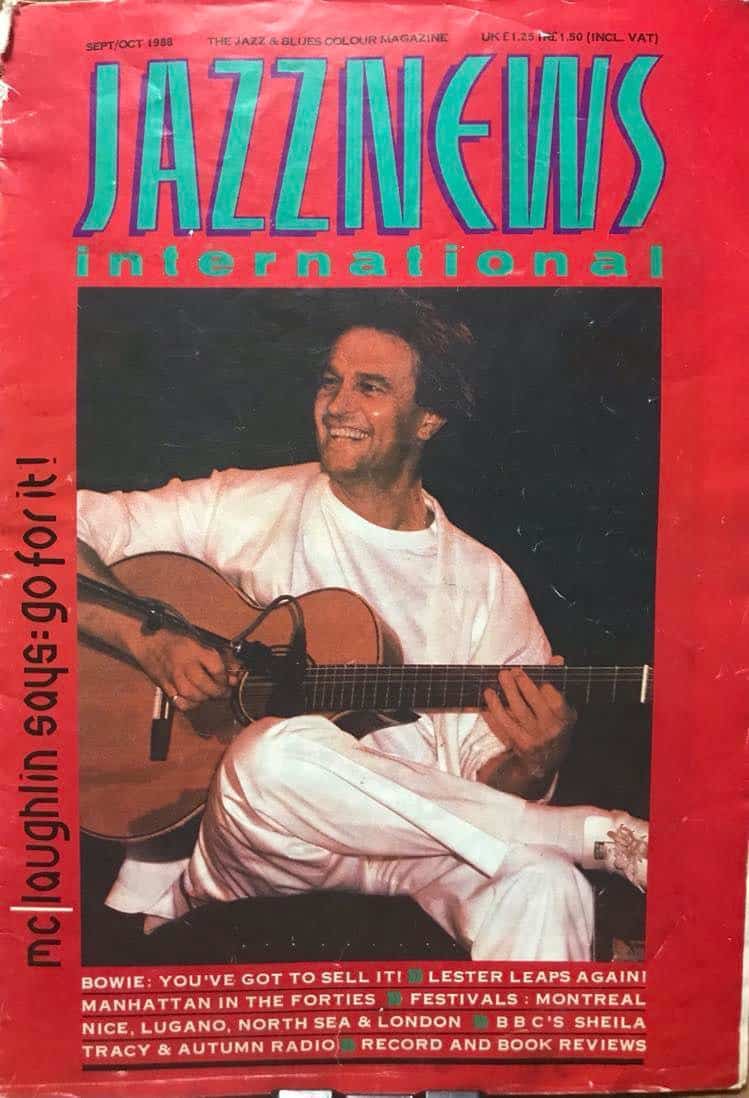
Sept/Oct ’88 cover of JazzNews International,
Interview with legendary jazz guitarist John McLaughlin, by Jim Connolly
I was a very fledgling photographer, hence the book title’s double meaning. Of course, the title is also a nod to Miles Davis’s landmark 1959 recording Kind of Blue. To wit, Miles features quite a lot. Indeed, the book chronicles this particular photographer’s ‘adventures’ in trying to capture the legendarily coy trumpeter. With only about twenty minutes to get all your shots in, in the special stage-side section press photographers were ushered into, you had your work cut out for you to get in any half-decent shots at all. And back in the day, we’re talking analogue, so 36 shots per roll, which had to be rewound and replaced in the camera’s body –a very fiddly business, especially with the likes of Miles Davis wandering about willy-nilly. You had to carry two cameras at least, both loaded, and just hope and pray you weren’t caught short. I was, often. Indeed, I recall others, those who did this kind of thing as their bread-and-butter work, also having their moments. I would sometimes be asked: ‘Man, you gotta a spare roll?’ In the book, I relate one particular moment when I’d just ran out of film and yet there he was, Miles Davis, Mr Kind of Blue himself, progenitor of so many kinds of jazz, ambling over in my direction. And yet, I’d just snapped off two rolls of 36! What could I do? The tale is told within the pages of Kind of Green…
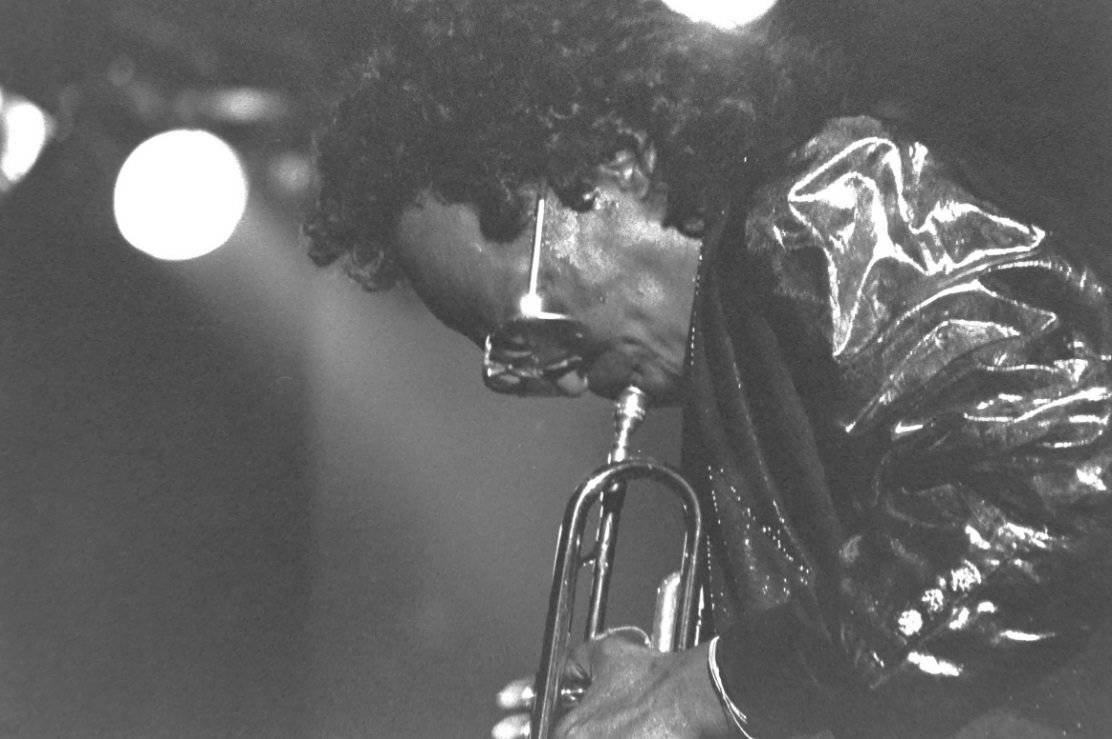
Original photo of Miles Davis, Martin Connolly
The book contains a number of anecdotes about many artists, often derived from my brother Jim’s interaction with them in interviews. The legendary Wayne Shorter passed away this year, but, according to Jim, Wayne nearly bought it on a very busy Tottenham Court Road in 1988. Let’s just say that Jim saved the day, and double-decker bus was involved… Indeed, Jim features quite a lot. I showcase his journalism and I showcase him, as the book is a tribute to him, who tragically passed away last year. Jim was a musician himself, a guitarist who was active in the Belfast scene in the 1980s. He played with a group called ‘Arcadia Lake’, which also featured local guitarist Bill Campbell, who would go on to become a composer of repute. Another occasion was Jim’s stint with ‘Project Jazz’, the brainchild of Brian Carson, who is still an active promoter of jazz within Northern Ireland.
Project Jazz and Arcadia Lake brought jazz-rock to Belfast. Jazz-Rock, or Fusion, is as different from Dixieland Jazz as Classical music is different to Pop, and yet it still contains elements of the origins of jazz, Blues. There is intensity and complexity in the music, but from what I remember of the gigs, there was also volume and excitement. Punters who had never even heard of Louis Armstrong, never mind the Mahavishnu Orchestra (covers of which Arcadia Lake performed) were blown away by what they heard, even if they had no way to properly characterize it. Part of the experience no doubt involved that element which makes jazz so exciting: they were listening to musicians who played like their life depended on it, not musicians who just want to provide some pleasant background noise. Musicians who are searching for something and don’t care about money or fame. All they care about is music.
Yes, Jazz has been, and continues to be, a part of the dynamic music culture within the island of Ireland, in whatever form it comes in. Jazz has a rich history in the South and in the North, aided by some very determined and also very interesting people. Of note in the book are a few photos of Dara O’Lochlainn standing cheek to cheek with Solly Lipsitz, Belfast’s own famous jazz guru. Solly used to run Atlantic Records in High Street, and it became something of a Mecca for jazz lovers, or simply those curious about music from overseas. Van Morrison was certainly one of them. Solly Lipsitz also lectured about jazz and other forms of non-indigenous music at the Belfast College of Art. Solly and Dara represented a North-South combo of irrepressible jazz love and jazz power –a welcome alternative to the other forces in Irish society in the 1980s that sought to divide us all. In this book, we see them together, about to enjoy an evening of jazz at the Belfast Guinness Spot. This is a book for lovers of jazz, for lovers of music and for those interested in exploring what Irish culture is and can be.
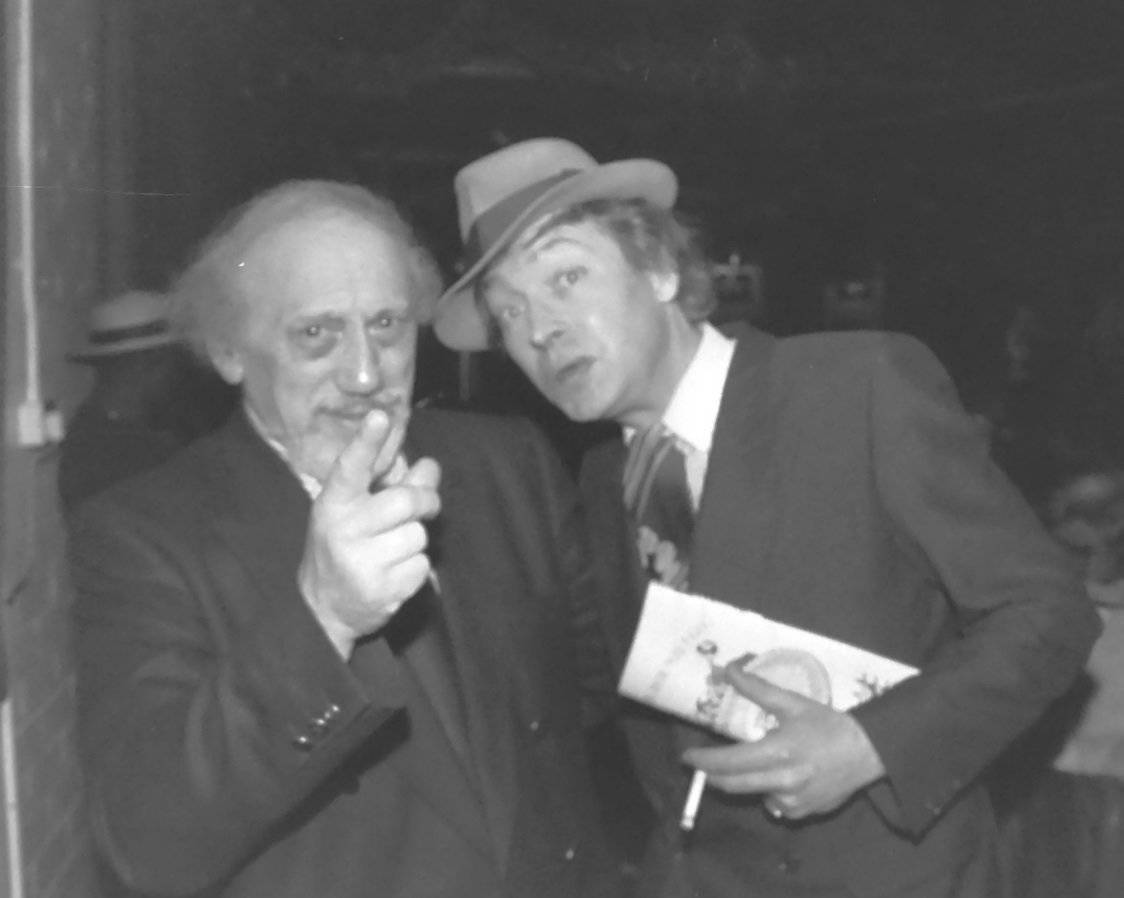
Solly Lipsitz and Dara O’Lochlainn, at the Guinness Spot, Belfast, Nov ’87
Kind of Green is available through Blurb at:
https://www.blurb.co.uk/b/11743572-kind-of-green
£20 for softcover / £5 for digital
ISBN: 9781911100256
108 pages
Available in regular outlets online, but at a higher price.
See Snowchild Press for more details and press reviews:
https://snowchildpress.weebly.com/kind-of-green.html
Martin Connolly
Kind of Green
This is a guest slot to give a platform for new writers either as a one off, or a prelude to becoming part of the regular Slugger team.
Discover more from Slugger O'Toole
Subscribe to get the latest posts to your email.
